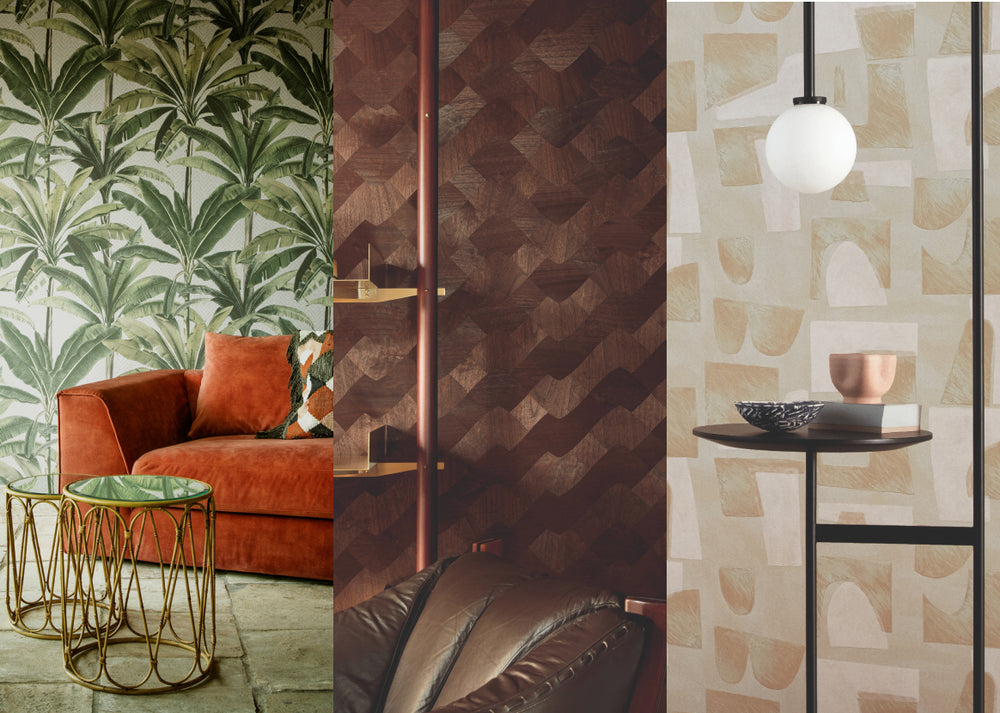Peel-and-stick wallpaper offers an easy and versatile way to revamp your living spaces without the commitment of traditional wallpaper. Peel-and-stick wallpaper has become a favorite among DIY and design enthusiasts. In this blog post, we'll explore the key guidelines for effectively using peel-and-stick wallpaper.
The Do's:
Prepare the Surface:
Ensure that the surface you're applying the peel-and-stick wallpaper on is clean, smooth, and free from dust or debris. Thoroughly clean the wall and let it dry completely before proceeding. A smooth surface will help the wallpaper adhere properly and prevent bubbles or wrinkles.
 Order Sufficient Quantity
Order Sufficient Quantity:
Measure the area you want to cover with peel-and-stick wallpaper accurately. It's essential to order enough wallpaper to avoid running out during the application process. It's better to have extra rolls than to be left short and potentially face variations in color or pattern if you need to order more.
Apply in Straight Lines:
Use a level or a straight edge to ensure that your first piece of wallpaper is applied perfectly straight. This will serve as a guide for subsequent pieces and help maintain a seamless look across the entire surface.
Smooth Out Bubbles and Wrinkles:
As you apply the wallpaper, use a squeegee or a credit card to smooth out any bubbles or wrinkles that may form.
Trim Excess Wallpaper Carefully:
After applying the wallpaper, trim any excess carefully using a sharp utility knife. Take your time and follow the edges precisely to create clean and neat lines.

The Dont's:
Don't Rush the Application Process:
Take your time during the application to ensure accuracy and precision. Rushing may lead to misalignment, bubbles, or creases, affecting the overall result.

Avoid Applying on Textured Surfaces:
Peel and stick wallpaper adheres best to smooth, flat surfaces. Avoid applying it to heavily textured walls or surfaces with pronounced imperfections, as this can prevent the wallpaper from sticking properly.

Don't Overlap the Sheets:
Resist the temptation to overlap the edges of the wallpaper sheets. Overlapping can create visible seams and disrupt the seamless look you're aiming for.

Avoid Applying on Freshly Painted Walls:
Allow newly painted walls to cure completely before applying peel-and-stick wallpaper. Applying it on wet or freshly painted walls can cause adhesion issues.
Don't Stretch the Wallpaper:
Avoid stretching the wallpaper as you apply it, as this can cause it to warp or shrink once in place, leading to misalignment.

Avoid Applying Near Heat Sources:
Keep peel-and-stick wallpaper away from heat sources like stoves, fireplaces, or radiators. Heat can cause the adhesive to weaken, resulting in the wallpaper peeling off over time.
Discover the perfect wallpaper and textiles for your dream space. Let our experts assist you in sourcing the perfect designs and materials. Call or text us at 561-904-6503 to start your interior design journey today!
 Order Sufficient Quantity:
Order Sufficient Quantity:







